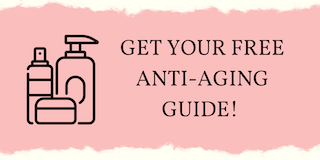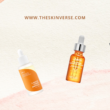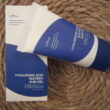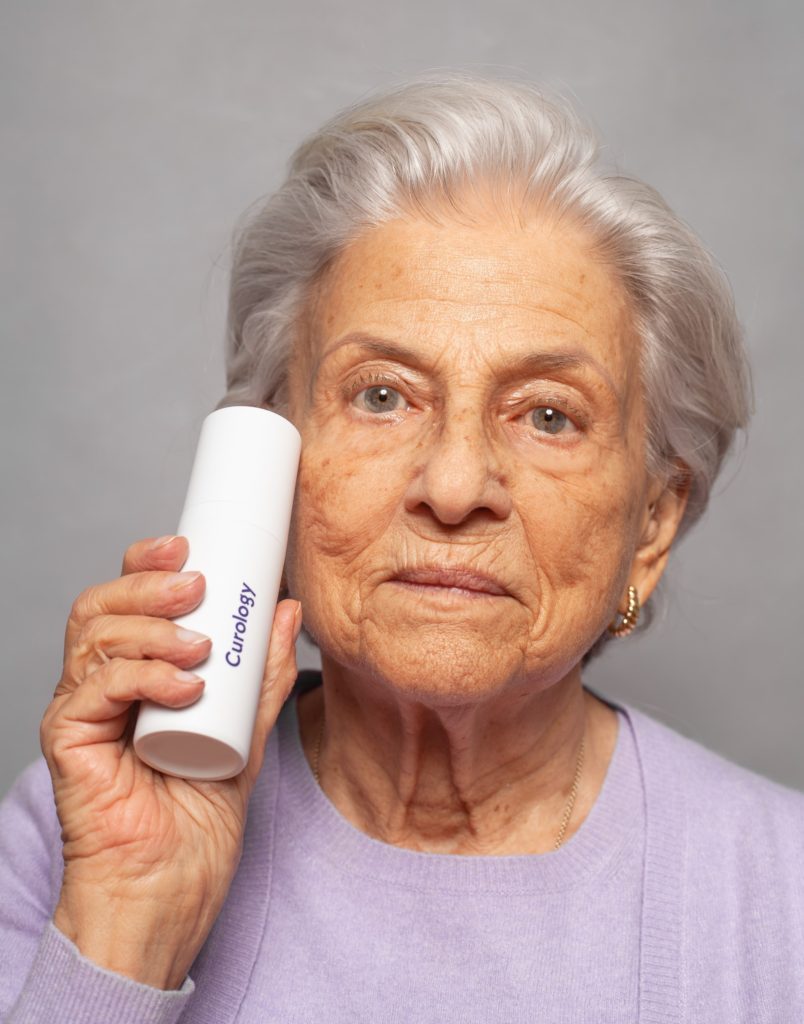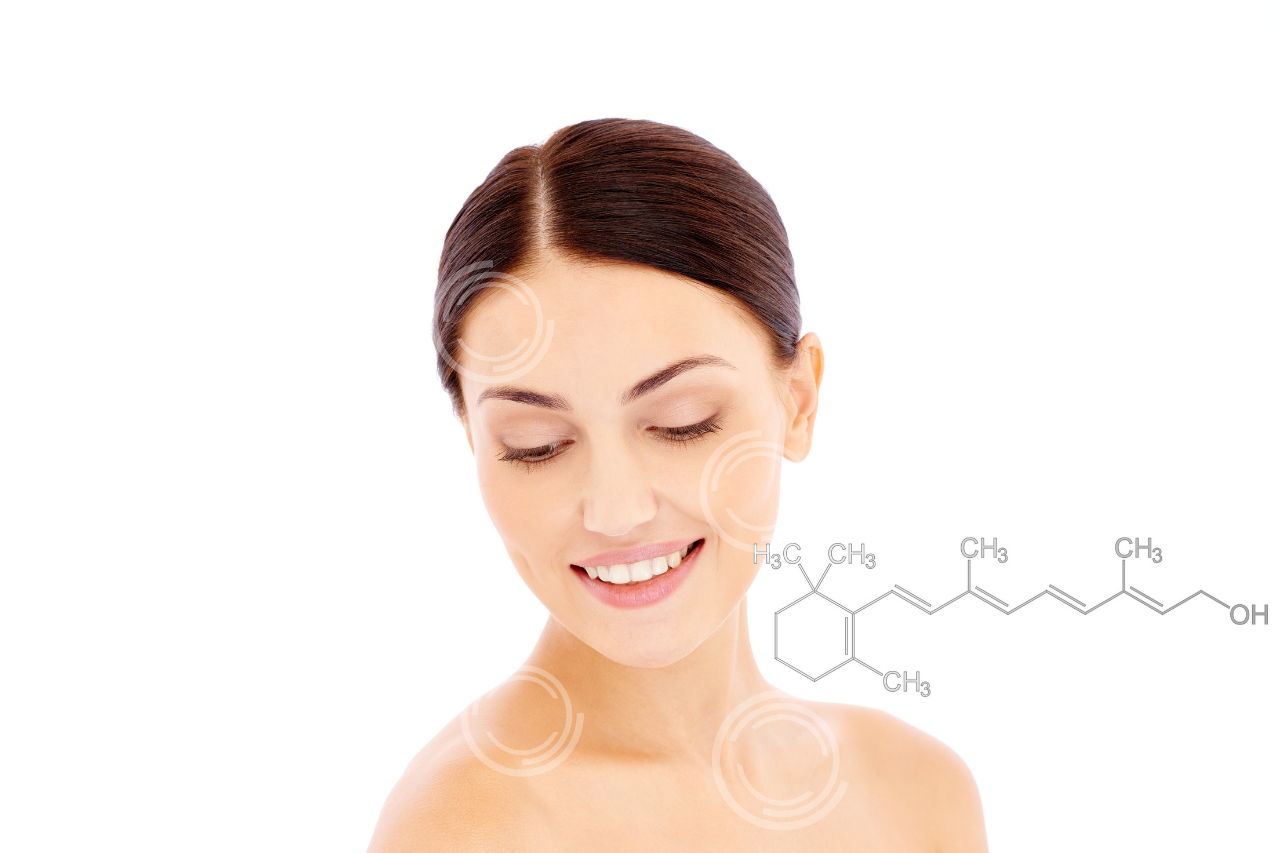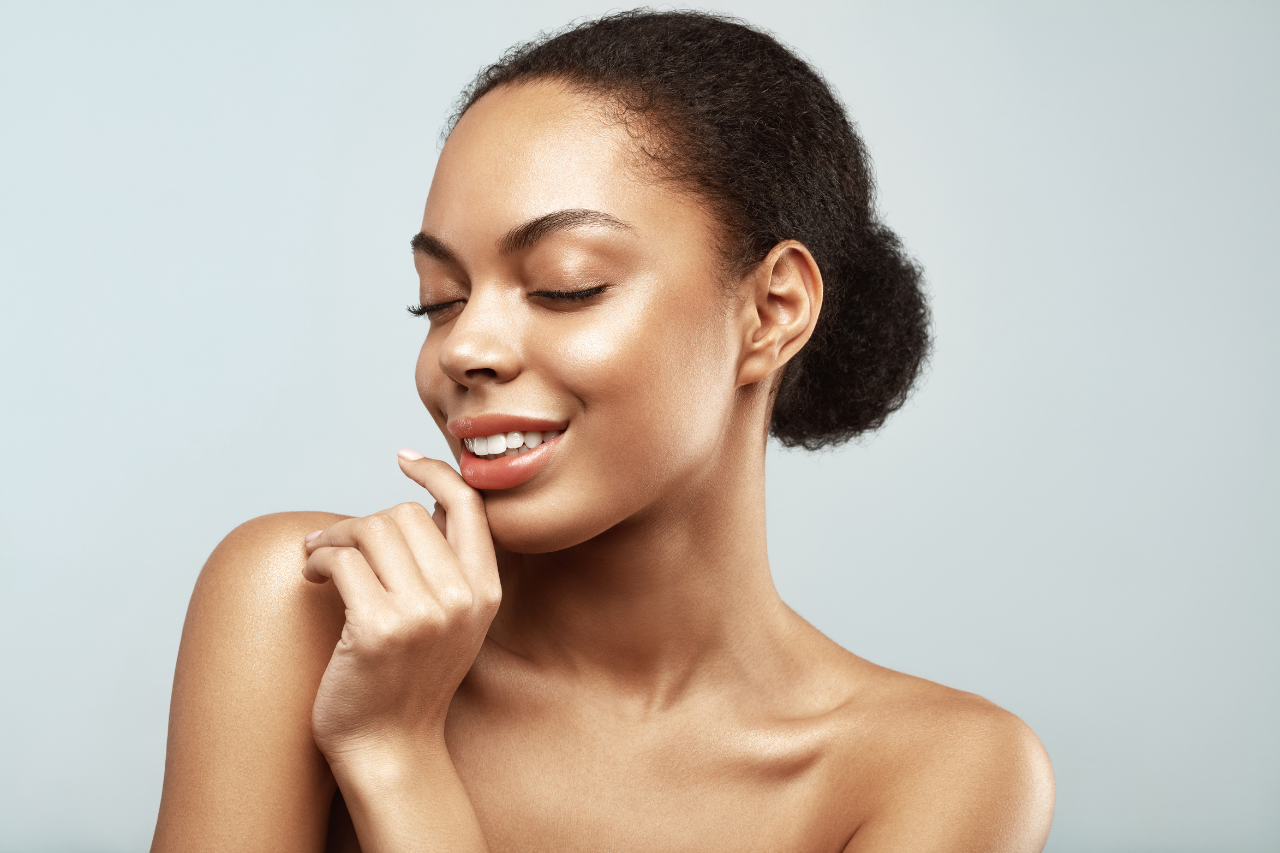Building skincare routine and sticking to one isn’t exactly a piece of cake. For some of us, it can be the most difficult thing they ever had to do. And we are with you on that. With so many products out there, it can get even more overwhelming at times.
Most of the time, it is about knowing what names to look for in a skincare product. But don’t worry, we have come to the rescue and made sure to ease it out for you with this simple guide based on every skin type. We understand that every skincare routine is different, however, there are some steps they all HAVE TO share.
I believe there are 6 essential skincare routine steps:
Building skincare routine starts with cleansing
Step1: Cleanser – Wash your face delicately with a cleanser that suits your skin. If you have dry skin, pick an alcohol-free, fragrance-free cleanser. If you have oily skin, look for an oil-free cleanser. Always wash your face with warm water. Congratulations, you cracked the code on building skincare routine!
Step 2: Toner – Toner is usually used after cleansing, and it helps smooth and quiet skin while the skin repairs itself. It also preps the skin for the next steps.
More on choosing toners: How To Choose Face Toners For Your Skin Type
Step 3: Exfoliant – Exfoliating your skin will make sure your skin sheds old skin cells, so the new skin cells can grow. This is directly related to keeping younger-looking skin and building skincare routine around anti-aging. Stay away from physical exfoliants such as scrubs, as they can be harsh on your skin. Instead, use chemical exfoliants 2-3 times a week. Be careful while choosing a chemical exfoliant, start with low concentrations first if you have sensitive skin. Mandelic acid or lactic acid can be a great place to start if your skin is sensitive.
Step 4: Serum – A serum can assist with issues, like lack of moisture or redness. Normally, you would use them after toning your face, before putting on your moisturizer. Serums and essences are the very essence (yes pun intended) of building skincare routine. If you want to use a couple of serums at once, check out our blog post on layering serums.
Step 5: Moisturizer(or, lotions) – You have to moisturize your skin every day, no matter your skin type. Usually, a lightweight moisturizer will work for oily skin, while heavier consistencies will work better for skin prone to dryness.
Step 6: Sunscreen – The sun affects the skin all year round. So, you have to wear SPF even if it is raining outside. Some moisturizers will have an SPF factor, but sometimes it may not be enough, so make sure you layer SPF on your daily moisturizer when you go out every day. American Association of Dermatology (AAD) recommends using an SPF 30 or higher.
Please consider these skincare routine steps as standard, since some routines might include additional products.
Building skincare routine for dry skin – Dry skincare routine
Let’s first talk briefly about why you have dry skin – dry skin condition is mostly caused by genetics. Less often, by temporary circumstances, such as the use of skincare products with retinoids or acids.
Dryness is caused by the damage to the hydrolipidic layer (mantle) and a lack of secretion by the sebaceous (oil) glands that produce sebum. (oil) This is exactly what supports the barrier function of the skin, protects the upper layer of the skin, and retains moisture.
So, it is very important to choose skincare products that specifically work to fix the lipid balance and skin barrier function. This is exactly where building skincare routine will start from.
Cleansers for dry skin:
First off, let’s start with cleansing products for dry skin. Best cleanser consistencies for dry skin would be emulsion like milk, cream, lotion-like textures that will give the dry skin the moisture that it is craving.
Use warm water to rinse your skin and avoid hot water at all costs. The primary function of our skin is its protective function which protects the skin from external aggressors. If the hydrolipidic layer (acid mantle) can not function properly, it means that none of the masks, serums, lotions we use on our skin will do their job. Facial cleansers need to be gentle and protect the outer layer of the skin.
Avoid these Aggressive surfactants:
Sodium Lauryl Sulfate (SLS)
Sodium Laureth Sulfate
Ammonium Lauryl Sulfate
Ammonium Laureth Sulfate
The following are gentle surfactants:
Coco Glucosides
Capryl Glucosides
Decyl Glucosides
Lauryl Glucoside
Glyceryl Oleates
Cocamidopropyl Betaine
Toners: Every skin type needs toners!
Then, move on to a hydrating toner that contains ingredients such as glycerin, hyaluronic acid, panthenol. It can be tricky to pick a good toner, especially if you have sensitive skin. Pick products that are free of fragrance, common irritants such as alcohol.
According to AAD, American Academy of Dermatology Association, usage of ingredients such as alcohol, high percentage alpha-hydroxy acids (AHA), fragrance, (including deodorant soaps), and retinoids should be strictly avoided. By doing so, you will make sure that you help your skin retain the natural oils on the skin.
Serums for dry skin:
I know, people have different opinions regarding using serums before moisturizing. I for once am a firm believer of that extra boost that serums provide for the skin. Choosing hydrating serums with hyaluronic acid and CoQ10 will definitely show their added value before moving on to your go-to moisturizer. You can apply them twice daily (morning and evening) depending on your preference really.
Consider incorporating vitamin C derivatives into your routine – try serums with ascorbyl glucoside, ethyl ascorbic acid, sodium ascorbyl phosphate that will also have some effect on pigmentation if you have any.
If you are using Vitamin C (best paired with Vitamin E and ferulic acid) and you have tested it to be working on your skin (esp if you have very sensitive skin) it would be best to use it once every other day rather than using it daily. Finish of building skincare routine with an SPF, NO MATTER THE SKIN TYPE.
More on Vitamin C serums: 4 Side Effects of Vitamin C serums, Benefits and More
Using Niacinamide
As we mentioned at the beginning, a common problem with dry skin is the damaged skin barrier – to address this issue make the best of the magical word – niacinamide.
Niacinamide is very versatile, it can be found in a great variety of products – from toners, serums to hydrating moisturizers. What it does exactly for the skin barrier is boost it by increasing ceramide production.
Ceramides are fatty acids that maintain the skin barrier and retain moisture. So, it is very crucial for dry skin to reap the benefits of niacinamide fully. Plus, niacinamide comes in handy when treating redness, reducing wrinkles and even acne.
Being also known as Vitamin B3, it is very “friendly” – meaning it gets along practically with everyone – almost all antioxidants, retinol, hyaluronic acid, peptides, most AHAs, and BHAs.
Building skincare routine for oily/acne prone skin – Oily skincare routine
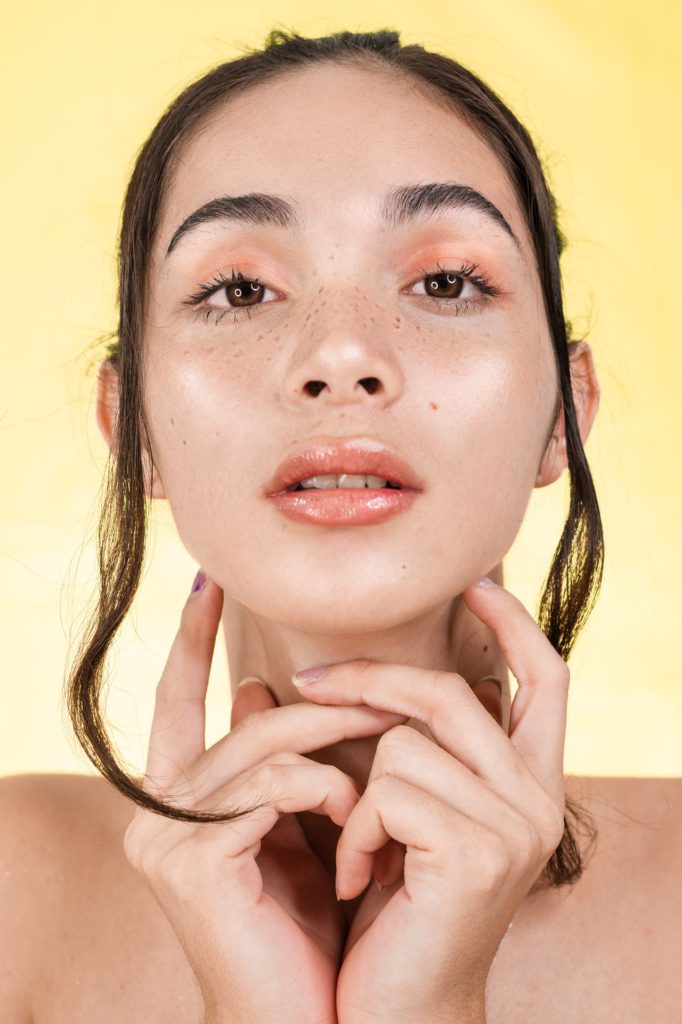
If you have not only shiny T-zone, shiny cheeks and shiny nasal area, large pores, blackheads on your nose, dull complexion – you guessed it, you have oily skin.
A lot has been written and researched about the reasons behind oily skin. The main factor behind oily skin is excessive sebum (oil) production which is in its turn the main culprit for acne breakouts. And the reason behind this factor can be internal or external.
The internal reason is your genetics, external reasons are sometimes environmental factors such as hot seasons, wrong skincare products, stress. The “peak” of oily skin age is considered from 15 to 25, around teenage times and later in the 20s.
But you know what they say, look on the bright side, if there is one upside to having oily skin it is that the produced sebum acts as a deterrent by protecting the skin from external aggressors. Oily skin tends to be more elastic compared to other skin types, so the aging process starts much later.
Having said that, it can be tricky at times to exactly tell your skin type, because of ever-changing external factors that affect how your skin feels. We all know those extra dry or extra oily days depending on how hot the weather is or our upcoming menstrual cycle. I guess what I am trying to say is, follow the routine, but adjust it according to how your skin feels. It is the only way to go!
You can’t get rid of your oily skin, but you can build skincare routine to control it. We are here to tell you how.
Cleansers: How to pick the right cleanser for oily skin
The main function of a cleanser is obviously – duh, cleaning your face. However, in doing so it is vital to pick products that will control your oil production without drying out oily skin. Having a cleanser with BHA (2%-4%) and benzoyl peroxide will take care of that acne prevention which is super important.
Gel and foams would be the best options here, they will not strip your skin off and provide the hydration it needs. Yes, your oily skin needs hydration too! Avoid sulfate at any cost and be careful to choose sulfate-free cleansers to prevent further damage to the skin.
Toners:
Your best bet would be AHAs – Glycolic acid, salicylic acid, lactic acid when it comes to chemical toners. Toners with natural ingredients such as clay are known for their oil-absorbing quality.
Toners with tea tree oil will leave your skin refreshed. Don’t forget about your hydrating toner! After using chemical exfoliants, apply hydrating toners. If your skin is red and acne-prone, a toner with Centella Asiatica extract will calm the skin down. Plus, it will serve its antibacterial purposes.
You can also opt for azelaic acid to fight acne, redness which is also gentler than AHAs.
Moisturizers/Serums:
The best moisturizers for oily skin are lightweight, water-based, and oil-free formulas. The ones with hyaluronic acid, panthenol, glycerin, aloe vera are great for locking the moisture in. Also, please remember that every skin type needs to be moisturized.
There is a common misconception around oily skin “not needing” a moisturizing cream. Because oil and hydration aren’t the same, it is super important to know the difference. When your skin isn’t hydrated enough, the skin releases even more sebum (oil), overcompensating for the lost moisture.
And as a result, you guessed it – you got even more acne breakouts at hand. For oily skin, building skincare routine upon the right moisturizer is a must.
Sunscreen: (a MUST for building skincare routine, for all skin types)
No matter your skin type, you always have to protect your skin from harmful UV lights. Look for lightweight, oil-free sunscreens with preferably mattifying effects that are non-comedogenic.
Water-based, sheer, oil-free are your main keywords when looking for sunscreen.
Building skincare routine for normal/combination skin – Normal skincare routine
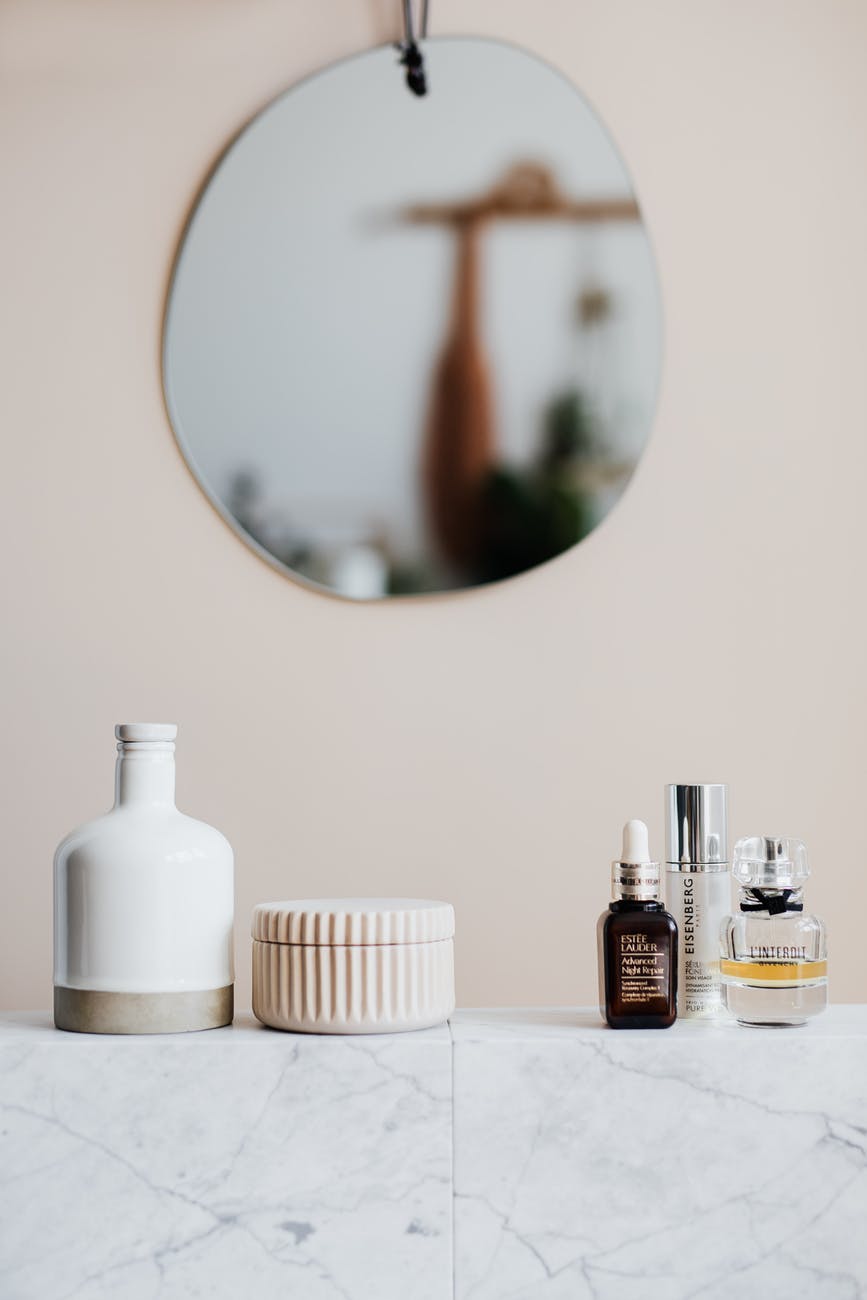
If your T-zone is oily, but the area around your cheeks is neither oily nor dry, you have normal-combination skin.
The challenge with the normal-combination skin is that treating it is like treating two skin types at the same time. Meaning, it can be a bit complicated to apply different products to different areas of your skin.
Cleansing: Combination skin
Go with a gentle cleanser, preferably that is gel-based or lotion-like. Avoid harsh cleansers as they can greatly damage your skin barrier by stripping off all necessary oils. What you need is a formula that will effectively remove all the dirt, debris, makeup residue from your face without making it feel greasy or tight at the end.
Toners:
We know how painfully overwhelming it is to pick that one toner that works for your combination skin! So, we did our best to ease this process. Regardless of your budget, look for hydrating, non-irritating toner with antioxidants that will do the balance work.
They won’t make your dry cheeks drier or oily T-zone even much oilier, they will do their work. Use an alcohol-free toner that won’t dry out your dry areas. The word nourishing is key here. If you are not a toner person, we strongly encourage you to become one. After all, you have to start from somewhere, right?
Use a gentle BHA exfoliant
What we like about a BHA exfoliant is that it helps deal with dead skin cells which refreshes the skin. It will decrease the oiliness of the T-zone while smoothing out your dry areas. In a nutshell, perfect for normal-combination skin.
You can use it once or twice a week for the best results. Salicylic acid is considered to be the safest and is on the non-irritating side. There are plenty of options like gel, water-like fluid consistencies that will make your skin glowy and healthy.
Moisturizing, using serums
Because you have to treat your areas differently, it is a bit of an adjusting game. Use thicker formulas, (cream-based products for example) on dry areas, as for the oily areas go with a lightweight product. Thin lotion, liquid textures would work best for this area.
Look for a moisturizer with an SPF to enjoy the double benefit. At night, go for a serum or a gel-like moisturizer in dry areas, while using a lighter texture for oily areas. Make sure the products you use are enriched with antioxidants, skin-repairing ingredients for that extra boost.
The main takeaway here is knowing when and where to layer the products. Once you get this right, there is pretty much nothing that can go wrong.
SPF
Just like we mentioned above, every skin type needs to be protected from sun damage. And normal-combination skin is no exception. Apply at least an SPF 30 sunscreen that is lightweight with a matte finish for the entire face. This is the last step of building skincare routine for every skin type.
Building skincare routine for sensitive skin – Sensitive skincare routine

If your skin experiences reactions often, chances are you have sensitive skin. The tricky part is determining what exactly your skin is reacting to. Sensitive skin can react to virtually everything – from weather conditions to fragrances.
If you think you have oily skin, for example, it can still be oily and sensitive. The same goes for the instance when you have dry-combination skin, plus sensitive skin. So, it is very crucial that you observe and pay attention to what generally triggers your skin and adjust building skincare routine around it.
In case your skin experiences continuous reactions to certain environmental or internal triggers, then you have sensitive skin. If you notice broken capillaries, experience breakouts often, have your skin react to fragrances, you have sensitive skin. Sensitive skin reacts even to bad weather and has dry, patchy spots.
You might wonder exactly why you have sensitive skin. Well, skin sensitivity is often the result of a broken or weakened protective barrier. The latter consists of keratinized scales (corneocytes) and lipids (fats) that fill the space between them. If everything functions well with the barrier, then it retains moisture well in the skin. Therefore, it does not allow external agents to penetrate it from the outside. When the barrier is broken, those agents enter the skin that gives them a trigger as a response.
Cleansing for sensitive skin – Start building skincare routine
When cleansing sensitive skin, be extra cautious – go with a very gentle formula that won’t strip the skin off and take all essential oils. This is very crucial for building skincare routine for sensitive skin.
Remember, we are trying to repair our skin barrier, not destroy it, especially considering sensitive skin is really thin. Cleansing lotion/milk would be perfect to soothe the skin and leave it hydrated. If your skin experiences extra redness, just spraying a face mist will refresh and add that cooling effect to the skin.
Try to get cleansing products that contain ingredients such as ceramides, glycerine, hydrating oils. With sensitive skin, you need to wash your face for at least 60 seconds. Do not rub your face with a towel.
Toners:
Yes, just like your sunscreen, a toner is very important for balancing the skin’s pH levels. And sensitive skin is no exception. Since sensitive skin is acne-prone, applying products with soothing ingredients such as jojoba oil, rose water, vitamin E would do the trick by hydrating the skin.
Use alcohol and fragrance-free formulas to prevent any possible irritation, but you probably already know that. Contrary to popular belief, sensitive skin needs toners, as long as you use the right formula.
While building skincare routine, toners will make sure you make every product work together.
Moisturizing/SPF
This is the last and decisive of your skincare routine steps for sensitive skin. You need to lock the hydration and seal everything. Your best when opting for a moisturizer is an unscented, lightweight, fragrance-free, non-comedogenic, hypoallergenic, water-based moisturizing cream or gel. And yes, this description is a mouthful, we are also aware of that.
The main problem with building skincare routine for sensitive skin is its lack of hydration. Naturally, it is super important to lock the hydration throughout the day. Use a zinc oxide sunscreen because of its property to reflect the UV lights off the skin. It doesn’t let the rays reach the surface of your skin, very cool, right?
Serums and building skincare routine at night
You are looking for a serum that will hydrate and calm your skin at the same time. This is the crucial part of building skincare routine. Look for serums with hyaluronic acid and vitamin B5 in it.
And of course, ingredients with relaxing properties such as calendula, Centella (aka cica), and chamomile oils will make sure your skin isn’t overreacting (literally). By restoring skin barriers these formulas will help you out a great deal.
To wrap it up
Treating your skin and coming up with a routine that works for you can take some trial and error. However, with the right dedication and consistency, you will get there and finally build skincare routine that works for your skin.
We just hope we have been helpful enough with this article by giving you some insight you need in this journey 🙂

